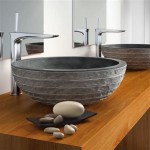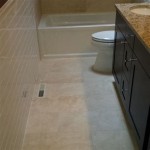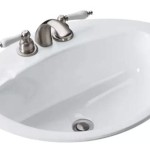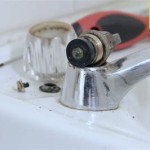Choosing the Right Paint for Your Bathroom Vanity: A Guide to Durability and Aesthetics
Transforming a bathroom vanity with paint is a popular and cost-effective way to refresh the space. However, selecting the right paint for this high-traffic, moisture-prone area is crucial for both aesthetics and longevity. This guide explores key considerations when choosing paint for your bathroom vanity, emphasizing factors like durability, moisture resistance, and finish.
Key Considerations for Choosing Paint for Your Bathroom Vanity
Before applying paint to your bathroom vanity, it is essential to choose a product that meets the specific demands of this environment. Factors to consider include:
1. Moisture Resistance
Bathrooms are inherently humid spaces. The constant presence of moisture can lead to paint peeling, cracking, and mildew growth. To prevent these issues, it is essential to select a paint specifically formulated for high-moisture environments. This typically means choosing a paint that is labeled as:
- Moisture-resistant: This indicates that the paint is formulated to withstand exposure to moisture and humidity.
- Mildew-resistant: This indicates that the paint contains additives that inhibit the growth of mildew, a common concern in bathrooms.
While any paint can be used in a bathroom, selecting a paint with moisture and mildew resistance significantly improves its longevity and appearance.
2. Durability
Bathroom vanities experience regular use, from daily cleaning to the occasional spill. Thus, choosing a durable paint is key to ensuring its long-lasting beauty. Look for paints with the following characteristics:
- High scrubbability: This indicates that the paint can withstand repeated cleaning with detergents and disinfectants without damage.
- Good adhesion: This ensures that the paint adheres well to the surface of the vanity, preventing chipping or flaking.
- Resistance to scratches and abrasions: This is particularly important for areas prone to contact with objects or daily wear and tear.
A durable paint will help maintain a pristine appearance for years to come, even with frequent use.
3. Finish
The finish of the paint affects its overall appearance and functionality. Consider these options:
- Matte: This finish offers a flat, non-reflective appearance, ideal for hiding imperfections. However, it can be less scrubbable than other finishes and may show dirt more easily.
- Eggshell: This finish provides a slightly sheen and is more durable than matte, offering a balance between appearance and practicality.
- Satin: This finish has a soft sheen, making it more forgiving of imperfections while remaining durable. It is well-suited for high-traffic areas.
- Semi-gloss: This finish provides a noticeable sheen, making it easy to clean and resistant to moisture. It is ideal for areas prone to splashes and spills.
- Gloss: The highest sheen option, offering maximum durability and water resistance. Glossy finishes are suitable for areas requiring frequent cleaning and a sleek, modern look.
The choice of finish depends on personal preference and the desired aesthetic. For a bathroom vanity, an eggshell or satin finish is a popular choice, offering durability and a subtle sheen.
Types of Paint for Bathroom Vanities
Different types of paint are available for bathroom vanities, each with its own strengths and weaknesses. Some popular choices include:
1. Acrylic Latex Paint
Acrylic latex paint is a widely used option for bathroom vanities due to its excellent moisture resistance, durability, and easy application. It is available in a variety of finishes and colors, making it versatile for any style.
2. Oil-Based Paint
Oil-based paint offers superior durability and water resistance compared to latex paint. However, it is more difficult to apply and clean up, and it may take longer to dry. It is often used for high-end vanities where maximum durability is desired.
3. Epoxy Paint
Epoxy paint is a highly durable and moisture-resistant option favored for areas with heavy wear and tear. It creates a hard, protective coating that is resistant to scratches, stains, and chemicals. However, it is more expensive than acrylic latex or oil-based paint and requires a specialized application process.
Preparation for Painting a Bathroom Vanity
Before painting your bathroom vanity, proper preparation is essential for a successful and long-lasting finish. This includes:
- Cleaning: Thoroughly clean the vanity with a degreaser and mild soap to remove any dirt, grime, or grease.
- Sanding: Sand the surface of the vanity to create a smooth, even base for the paint. This helps the paint adhere properly.
- Priming: Apply a primer specifically designed for bathroom use to seal the surface and create a better base for the paint.
- Protecting surrounding areas: Cover surrounding surfaces with drop cloths or masking tape to prevent paint spills or overspray.
These steps ensure a high-quality paint job that will last for years.

How To Paint Bathroom Cabinets Without Sanding 8 Vital Steps Grace In My Space

How To Paint Bathroom Vanity Cabinets Tutorial Benjamin Moore

How To Paint A Bathroom Vanity Love Remodeled

How To Paint Laminate Cabinets Love Renovations
.jpg?strip=all)
Painting A Bathroom Vanity Again Dream Green Diy

How To Paint Bathroom Vanity Cabinets Tutorial Benjamin Moore

How To Paint Cabinets Last Painting A Bathroom Vanity Maison De Pax

How To Paint A Bathroom Vanity Angela Marie Made

How To Achieve A High End Vanity Look With Paint Hardware For Under 50 This Is Our Bliss

21 Beautiful Painted Bathroom Cabinet Ideas







